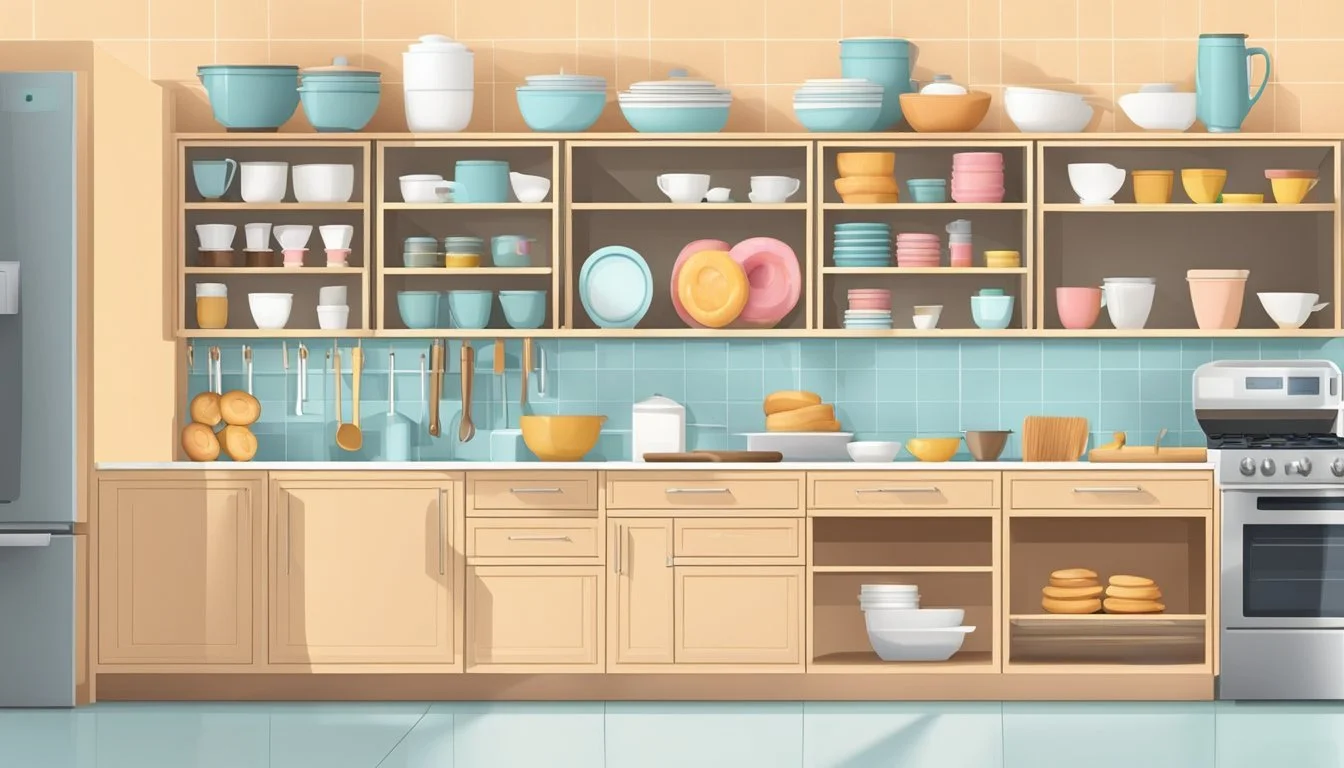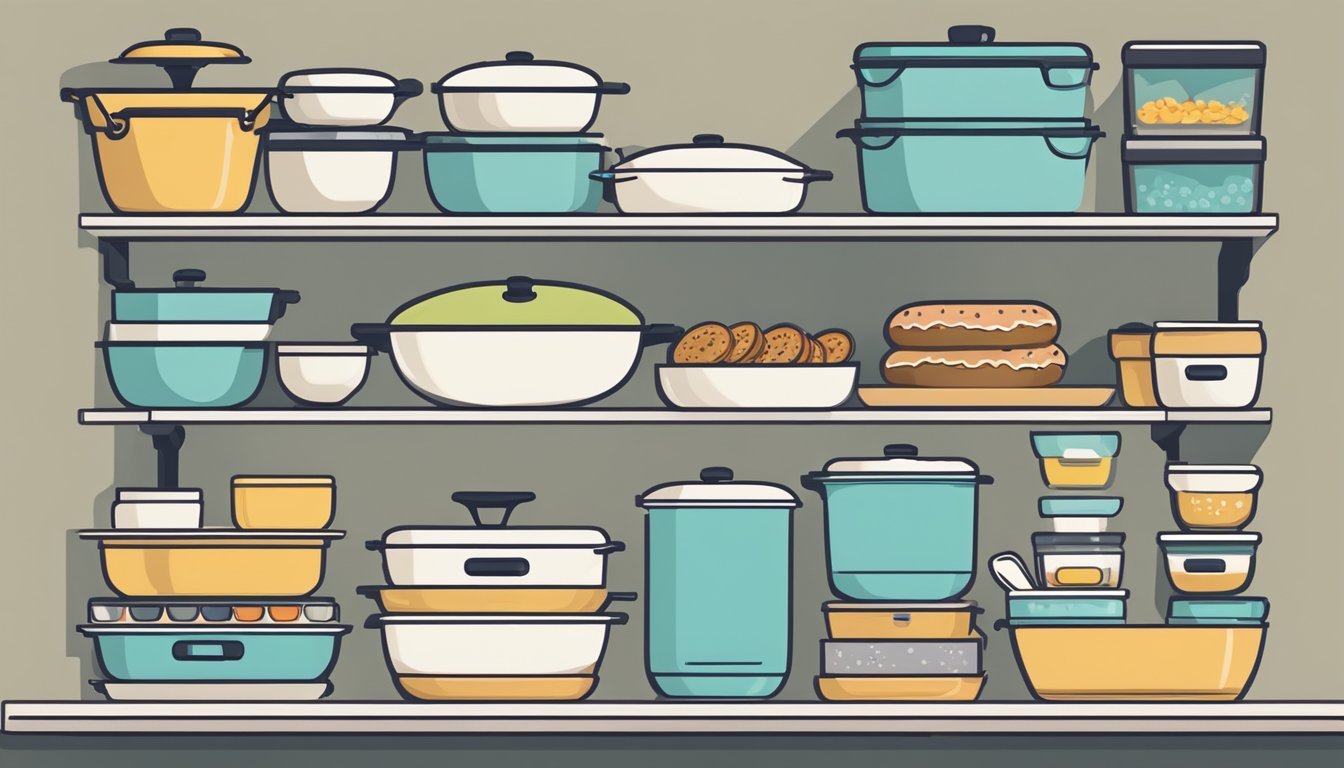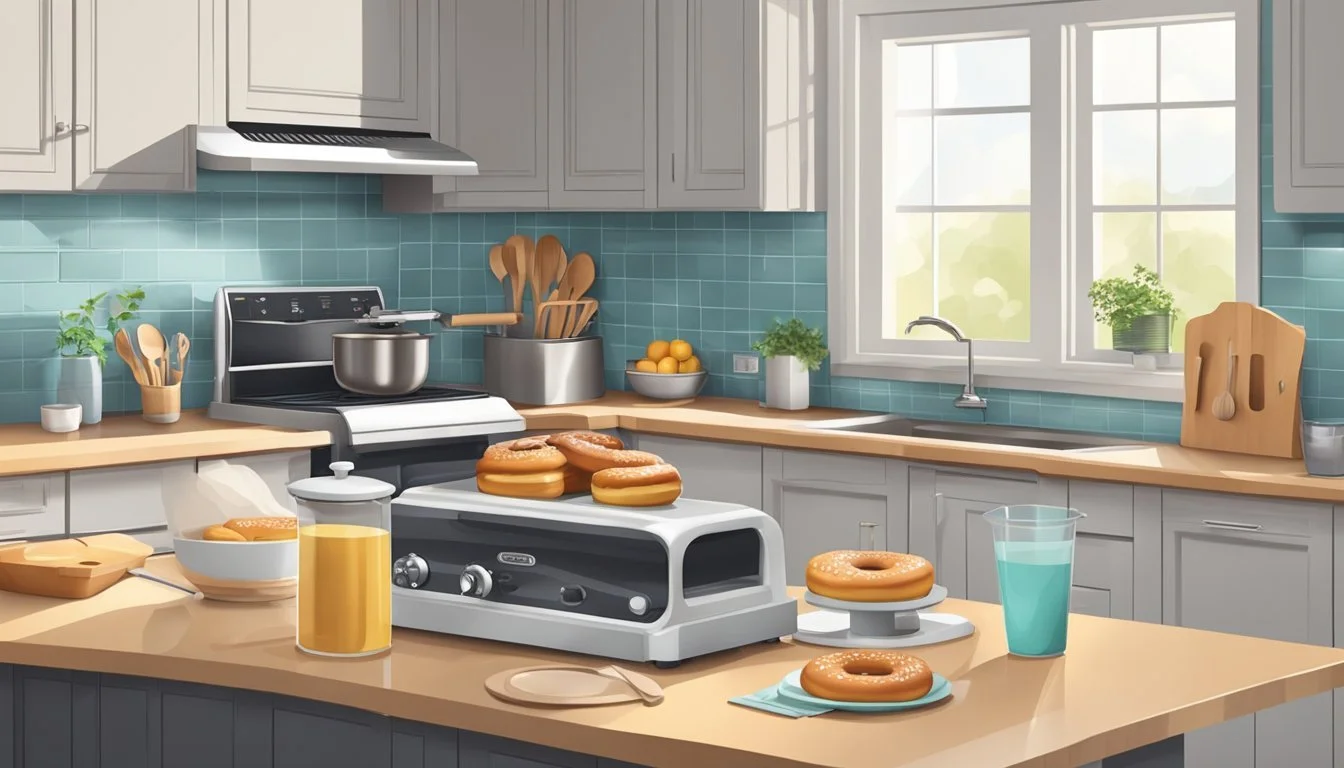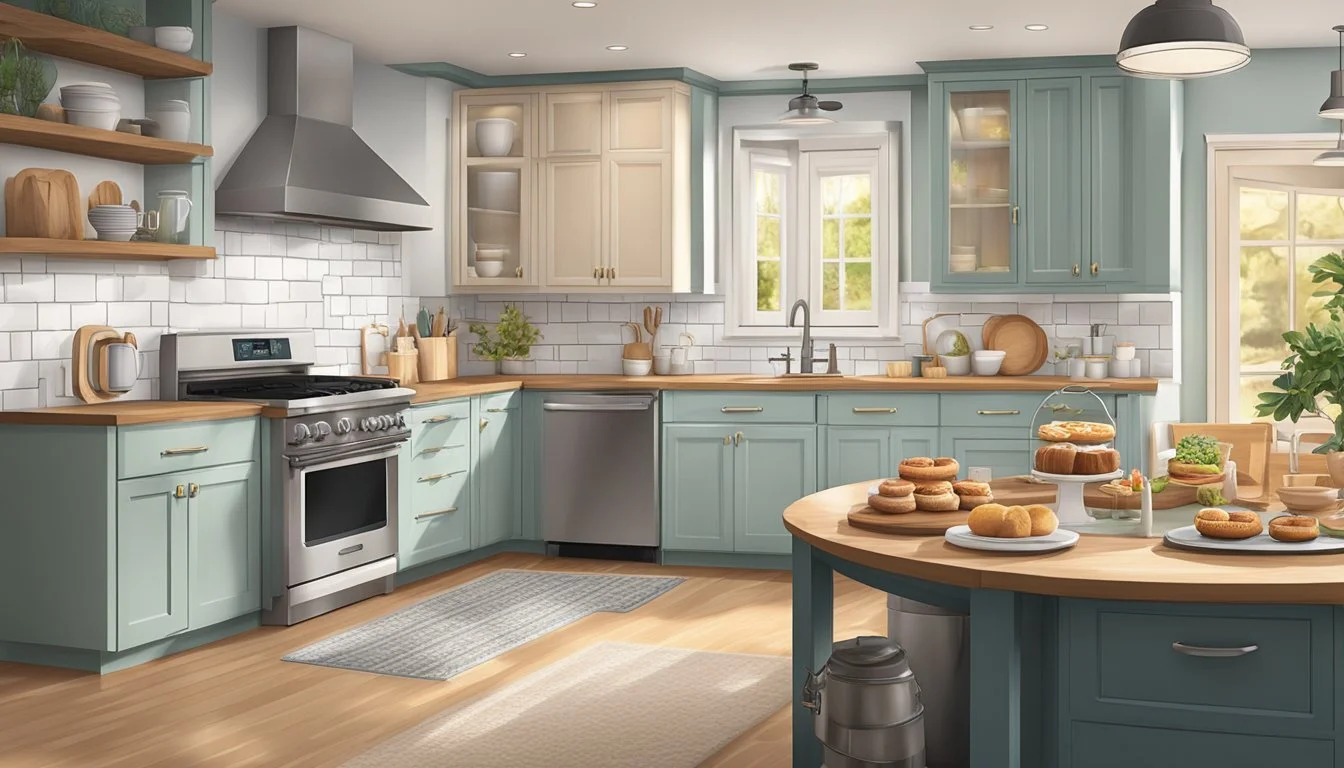How to Organize Your Kitchen for a Dinner Party with a Donut Maker
Seamless Entertaining Tips
Organizing a kitchen for a dinner (What wine goes well with dinner?) party requires thoughtful planning and strategic setup, particularly when incorporating specific appliances such as a donut maker. Guests often congregate in the kitchen, making it the heart of the soiree, so efficiency and flow are key. A well-organized kitchen can set the tone for a successful evening, allowing the host to prepare dishes with ease and interact with guests without feeling overwhelmed.
To achieve an optimal layout, it is beneficial to divide the kitchen into distinct zones tailored to the various stages of meal preparation and entertaining. Essential cooking utensils, pots, and pans should be readily accessible near the cooking area, while a dedicated station for the donut maker can serve as both a functional and interactive element for guests. Keeping the work surfaces clutter-free and storage spaces neatly organized not only enhances the visual appeal but also contributes to a more functional and pleasant cooking environment.
Ahead of the event, it's crucial to declutter countertops, organize ingredients, and ensure that all necessary tools are at hand, including the dinnerware and serving pieces that will showcase the evening’s culinary delights. With the donut maker as a highlight, it’s advantageous to prepare the dough in advance and designate a space for guests to watch and participate in the donut-making process if desired, adding an element of fun and creativity to the dinner party experience.
Designing Your Kitchen Layout for a Dinner Party
Preparing a kitchen layout for a dinner party involves strategic use of space and furnishings to facilitate efficient cooking and serving. Guests often congregate in the kitchen, so creating a functional and welcoming environment is key.
Maximizing Countertop Space
One maximizes their countertop space by designating zones for different stages of meal preparation. The countertop should house the donut maker and provide ample space for rolling dough. Consider relocating seldom-used appliances to a storage area to free up valuable counter real estate.
Utilizing Kitchen Island Effectively
The kitchen island can serve multiple purposes: as a buffet for appetizers, a station for the donut maker, or additional seating for guests. Ensure the island's surface is clear, aside from necessary items for the event, like a cutting board or serving platters, to maintain an organized look while being functional.
Optimizing Wall Space and Open Shelving
Wall space and open shelving can be optimized to keep essentials within reach but out of the way. Hang tools and frequently used utensils on hooks or magnetic strips. Use open shelving to store ingredients and cookware neatly in attractive containers or baskets, maintaining a clutter-free appearance suitable for a social kitchen setting.
Organizing Essentials for Cooking and Baking
A well-organized kitchen streamlines the process of cooking and baking, especially when preparing for a dinner party involving specialty items like donuts. Using the right organizational tools and systems ensures that cookware, utensils, and baking equipment are conveniently placed and accessible.
Storing Cookware and Serving Dishes
Cookware and serving dishes should have designated areas in the kitchen. Expandable organizers work well for keeping various sizes of pots, pans, and lids in order. It's advisable to opt for organizers with adjustable wires which can be tailored to fit the available cupboard space. For more flexibility, one may also consider using systems with nonslip bases to prevent shifting when doors are opened or closed.
Pots and pans: Use vertical storage with tiered racks.
Serving dishes: Stack neatly on sturdy shelves or in deep drawers.
Organizing Baking Equipment and Pantry
The baking pantry should be organized in a way that items are easily identified and reached. Ingredients like flour, sugar, and baking powder can be stored in clear, airtight containers with labels facing outwards. Equipment such as measuring spoons and cups can be grouped in labeled bins. Sheet pans and baking trays could benefit from shelf dividers, enhancing accessibility while keeping them upright and separated.
Measuring tools and small baking accessories: Store in clear bins with labels.
Bakeware: Utilize cabinet shelf dividers for stacking and separation.
Keeping Cooking Utensils and Knives Accessible
The organization of cooking utensils and knives is essential for efficient meal prep. Utensils used frequently should be within arm's reach, perhaps hanging on a rail above the counter or stored in a utensil holder. Knives should be stored safely yet conveniently, either on a magnetic strip or in a knife block, ensuring that the right tool is always at the ready for any cutting task.
Utensils: Hang on rails or store in divided holders.
Knives: Keep on magnetic strips or in blocks for quick, safe access.
Efficient Food Storage Solutions
Proper organization of food storage areas is vital in a kitchen set up for dinner parties, ensuring quick access and optimal use of space. The key lies in strategically using refrigeration, a system for dry goods, and a mini pantry, particularly when a donut maker is part of the event setup.
Utilizing the Refrigerator and Freezer
One should place items in the refrigerator and freezer in a way that maximizes space and preserves the quality of the food. A clear, logical system helps the host quickly find what they need during the hustle of preparing for a dinner party.
Refrigerator: Group ingredients by type and usage. For example, store all dairy items together and use clear, airtight containers for leftovers to easily stack and prevent odor transfer.
Freezer: Utilize bins or bags to keep frozen dough for donuts, segregating them from other items to prevent flavor contamination.
Storing Dry Goods with Labels and Dividers
Dry goods require an organized approach that diminishes clutter and makes each ingredient readily accessible.
Labels: Clearly label all containers with contents and expiry dates to avoid confusion and waste.
Dividers: Use shelf dividers in cabinets or pantry to separate different categories of food, such as baking ingredients for the donuts, from other pantry staples.
Implementing a Mini Pantry for Everyday Items
A mini pantry should hold the most frequently used items, making them quickly reachable.
Everyday Items: Stock items like flour, sugar, and various toppings for donuts in the mini pantry. Keep these within arm's reach to effortlessly move between tasks.
Visibility: Ensure visibility and easy access in the mini pantry with steps or tiered shelves, so every item is in plain sight.
Setting Up for a Donut Maker Dinner Party
A successful donut-themed dinner party hinges on a well-prepared donut maker station and the thoughtful integration of donuts into the dinner menu. Toppings and extras elevate the experience, offering guests customization and variety.
Preparing the Donut Maker Station
Before guests arrive, one must ensure the donut maker is clean, functional, and ideally positioned in the kitchen or dining area. The surface should have ample space for the donut maker, cooling racks, and serving platters. It is recommended to have a nearby power outlet to avoid cords stretching across walkways which may pose a tripping hazard. One should test the donut maker prior to the party to guarantee it is in perfect working order.
Arranging Toppings and Extras
Next to the donut maker, a toppings station featuring an array of choices encourages guests to customize their donuts. Organize toppings in small bowls or jars and label them for easy identification. Consider a variety of flavors and textures:
Sweet: Chocolate chips, sprinkles, cinnamon sugar
Savory: Bacon bits, shredded cheese, herbs
Sauces: Maple syrup, honey, caramel
Provide utensils such as small spoons or tongs for hygienic and convenient distribution of toppings.
Integrating the Donut Maker into Your Menu Planning
When planning the menu, one should incorporate donuts in a way that complements the overall meal without overwhelming it. Donuts can serve as an appetizer, dessert, or a unique side dish. If the dinner features multiple courses, consider lighter options to balance the richness of the donuts. Here's a brief menu structure:
Starter: Miniature donut holes with assorted dips
Main: Grilled chicken and vegetables with side donuts
Dessert: Full-sized donuts with a variety of toppings and sauces
Accommodate dietary preferences by offering gluten-free or vegan donut batter options, ensuring that the dinner party is enjoyable for all guests.
Organization Details for Convenience and Aesthetics
When preparing for a dinner party that includes the use of a donut maker, one's organization strategy should not only streamline the process but also contribute to the overall look and feel of the kitchen space.
Using Baskets and Tupperware for Organization
Baskets provide a visually appealing way to group similar items together. They can be strategically placed on countertops as a temporary home for key ingredients and utensils needed for making donuts. For instance, flour, sugar, and baking powder can be neatly stored in labeled baskets, allowing for easy access during prep time. Similarly, durable Tupperware and plastic containers offer a practical solution for pre-measured ingredients. Translucent containers allow hosts to quickly identify contents, saving precious time during the hustle of party preparations.
Prep baskets for ingredients:
Flour, Sugar, Baking Powder
Tupperware for:
Pre-measured wet and dry ingredients
Incorporating Plants and Decor for Ambience
The inclusion of plants can enhance the kitchen's ambiance, providing guests with a fresh and inviting atmosphere. Small potted herbs or floral arrangements on the kitchen island not only serve as decor but can also be functional, offering fresh garnishes for the food being prepared. A balance between aesthetic and practicality is key; ensure that plants do not encroach on workspace needed for the donut maker and other cooking activities.
Decor placements:
Herbs: On windowsill or kitchen island
Floral arrangements: Center of the dining table or side counters
Employing Hidden Storage and DIY Solutions
Maximizing hidden storage space allows a kitchen to appear uncluttered while still keeping essential items within reach. Utilizing space under the island for hidden storage or installing DIY shelves along unused wall areas can neatly conceal tools and equipment until they are needed. For example, the donut maker can be stored under the counter in a cabinet outfitted with a shelf that slides out, making it easy to access and set up when it’s time to start baking.
Hidden storage examples:
Under island cabinets for appliances
Sliding shelves for quick access to the donut maker
By thoughtfully employing baskets, Tupperware, hidden storage, and decorative elements, hosts can create an environment that is both functional for the task at hand and welcoming for guests attending the dinner party.
Keeping Your Kitchen Neat and Ready for Guests
When organizing a kitchen for a dinner party, it's crucial to maintain clutter-free surfaces and a spotless environment, while also ensuring easy access to tableware and linens. These subsections provide targeted strategies to achieve a neatly organized kitchen.
The Neat Method for Clutter-Free Surfaces
To ensure clutter-free counters, one should embrace a minimalist approach. Countertops should display only essential items, and a donut maker, if being used during the party, should have a designated space. For effective management:
Appliances: Store seldom-used appliances in cabinets to maximize counter space.
Ingredients: Keep non-essential ingredients out of sight, except for those used for party dishes.
Daily Cleaning Hacks for a Spotless Environment
A clean kitchen is inviting to guests. To maintain hygiene and order:
Spillages: Wipe spills immediately with a microfiber cloth to prevent stains.
Surfaces: Regularly disinfect countertops to ensure a germ-free environment for food preparation.
Systematizing Tableware and Linens
An orderly system for tableware and linens can streamline setting up for a dinner party.
Tableware: Group items by type and frequency of use. Everyday dishes should be near the dishwasher for efficient unloading and reloading before guests arrive.
Linens: Store a set of party linens separately. This ensures they are free from daily wear and ready to use. Fold or hang tablecloths and napkins neatly to avoid wrinkles.
By following these meticulous practices, one can maintain a kitchen that is both functional and welcoming for guests.
Smart Use of Kitchen Accessories and Appliances
Organizing kitchen accessories and appliances efficiently lays the foundation for seamless operation during a dinner party. A well-arranged kitchen with a focus on accessibility and functionality will bolster the host's confidence and ease during preparation and entertainment.
Streamlining Coffee Maker and Other Small Appliances
The coffee maker should have its special corner alongside other frequently used small appliances. To ensure the coffee maker is always ready for guests, one can station it near the mugs and coffee condiments. Appliances such as the donut maker should be prepped and placed on the counter before guests arrive. Organization Tip: Reserve a specific section of the countertop or a pull-out tray for these items, keeping them out of the way yet accessible.
Coffee Maker: Designate a station with cups, sugar, and cream nearby.
Donut Maker: Prep and place on the countertop beforehand for easy access.
Organizing Oils, Spices, and Other Cooking Necessities
Selecting the right oil can elevate a dish, and a dinner party demands both variety and accessibility of seasonings. Olive oil and other essential oils should be grouped and stored in a convenient area, ideally a pull-out shelf next to the stove. Organize spices in a tiered rack to maximize space and visibility.
Oils: Include olive oil, vegetable oil, and any specialty oils.
Spices: Use a tiered tray or spice carousel.
Integrating Technology and Outlets for Functionality
With an increasing number of kitchen appliances requiring power, strategically placed outlets are indispensable. They should be located where appliances will be used but remain unobtrusive. Devices such as a tablet with recipe apps or a digital assistant can be incorporated into the kitchen setup for additional help during cooking. Safety Note: Ensure outlets are positioned away from areas prone to liquid spills.
Outlets Placement: Under cabinets, on island sides, or pop-up outlets on countertops.
Technology Integration: Docking station or stand for tablets, phones with charging ports.
Personalizing Your Space for Enjoyable Cooking
Optimizing the kitchen for a dinner party involves customization that encourages both efficiency and ease. Selective display of cookbooks and tools adds a personal touch, while deliberate organization enables the host to work comfortably. Adhering to a minimalist approach can also minimize distractions during meal preparation.
Displaying Cookbooks and Favorite Culinary Tools
One may improve the kitchen's functionality by strategically positioning cookbooks on shelves or stands, making them easily accessible during cooking. Favorite culinary tools can also be displayed on hooks or racks, blending practicality with personal style. This blend not only brings personality into the space but also keeps crucial items within arm's reach.
Shelves for Cookbooks: Enhances accessibility and decor aesthetics.
Hooks/Racks for Tools: Provides ease of use and a decorative element.
Creating Your Own Kitchen Workspace
Establishing a designated workspace tailored to an individual's cooking style can dramatically enhance the cooking experience. This workspace should house all necessary equipment, such as doughnut makers for the dinner party, offering both convenience and efficiency. A tailored workspace ensures all tools are arranged logically, fostering a seamless cooking flow.
Designated Area: For specific tasks like doughnut making.
Logical Arrangement: Tools and ingredients organized for efficiency.
Embracing a Minimalist Style for Less Distraction
Adopting a minimalist style in the kitchen can help maintain focus while cooking, allowing for a more organized and less cluttered environment. By keeping only the essentials and decluttering countertops, one can ensure a more spacious and functional cooking area. The minimalist approach supports a stress-free atmosphere conducive to the enjoyment of cooking.
Decluttered Countertops: Keeps only the essentials for more space.
Functional Space: Encourages a stress-free cooking environment.
Final Touches Before the Event
In the hours leading up to the dinner party, ensuring the functional readiness of the kitchen and the dining area's comfort is imperative. Each facet contributes to a seamless evening of entertaining.
Confirming Electrical Safety and Appliance Readiness
Before guests arrive, a host should double-check that the donut maker and other appliances are in proper working order. It is important to:
Inspect: Ensure the donut maker's cord is undamaged and plugs fit securely into outlets.
Test: Run the donut maker and any other key appliances to confirm they function without tripping circuits.
Setting the Dining Area and Ensuring Comfort
The dining area is the stage upon which the dinner party unfolds. Attention to detail in this space can make a significant difference:
Seats: Guarantee that each guest has a comfortable seat and ample space at the table.
Table Setting: Arrange plates, utensils, and glasses in an orderly manner, ensuring each setting is complete and within easy reach for guests.
Reviewing Kitchen Organization Before Guests Arrive
Organization is essential for a successful dinner party. A host should:
Assess kitchen cabinets and countertops for clutter, removing unnecessary items.
Arrange ingredients and cooking utensils in a logical order, facilitating ease of access.
By meticulously preparing the kitchen and dining area, hosts set the stage for an evening of enjoyable and memorable dining.








